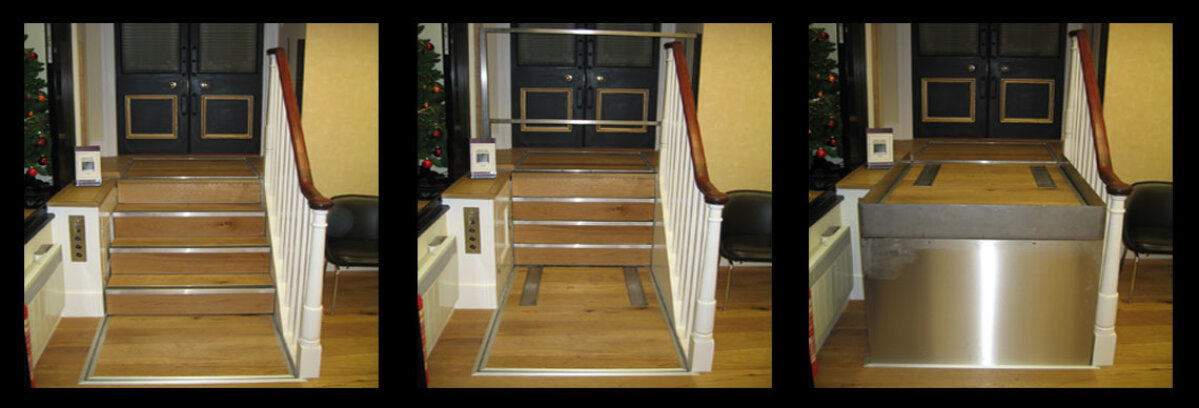
Stair chair
Find out the products we have available in our lift brochure
Lifts can come in all manner of shapes and sizes and offer a variety of uses, such as cherry pickers, now commonly used for servicing electric pylons and telephone wires, rather than their traditional use of picking tree-grown fruits. Others are used to support heavy loads such as scissor and maintenance lifts.
Ever since the first public lift was invented over 100 years, buildings with publicly accessible lifts have become very much commonplace in both public and private buildings. Nowadays this demand is not only restricted to high rise offices but also schools, museums, supermarkets and even people’s homes. This can come as no surprise, since time and experience has dispelled our initial fears of these inventions, namely that were unreliable, dangerous and had no safety precautions until very recently in their long history. Improvements in technology can allow for smaller designs that are just as sturdy as their counterparts and much more elegant to boot.
Given the fact that disability amongst young people is growing, parents are concerned about sending their handicapped children to schools that cannot accommodate their disability, especially if going from one class to another means walking up or down flights of stairs. Naturally, one way around this is to build a gentle ramp up to the school entrance. However, ramps can be cumbersome, dangerous in unfavourable weather conditions and take up a lot of space. Additionally, Sesame Access has a better alternative, our all-purpose stair chair.
Our stair chair consists of a rising lift platform that is concealed behind a moving staircase that is designed to mimic the surrounding environment, be it internal or external. This is possible due to our cladding options that allow the steps to be covered in a wooden, stone or even a carpet finish, amongst many other options. When combined with our ability to tailor each lift to the customer’s requirements, this stair chair is ideal for disabled access to any public, private or listed building no matter how large or small. We have even already installed lifts into many listed buildings so far, including Kensington Palace, the Institution of Civil Engineers, Merchant Taylor’s Hall and Beaumanor Hall, amongst many others.
Whilst the lift is not in use the clad staircase completely hides the mechanism until the stair chair needs to be used. By pressing the call lift button, the stairs slowly retract and the stair chair comes into public view. When the wheelchair user starts using the lift, a barrier/wheelstop rises up from the ground and surrounds the lift user. Afterwards, the lift starts moving up or down to the intended floor and once the lift has stopped moving, the barrier descends and the lift user can move off the lift.
We have been installing similar types of lifts in wheelchair users’ homes, a lot of them being designed to overcome the rise from ground level to the front door by turning their front step into a small stair chair enabling them to live a fully independent lifestyle without having to downsize to a smaller house with fewer rooms.
Udostępnij
